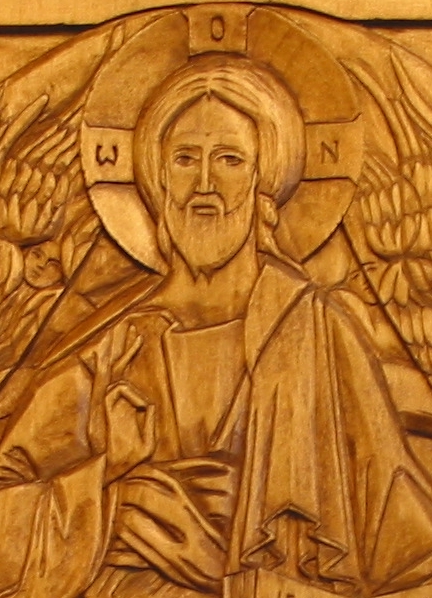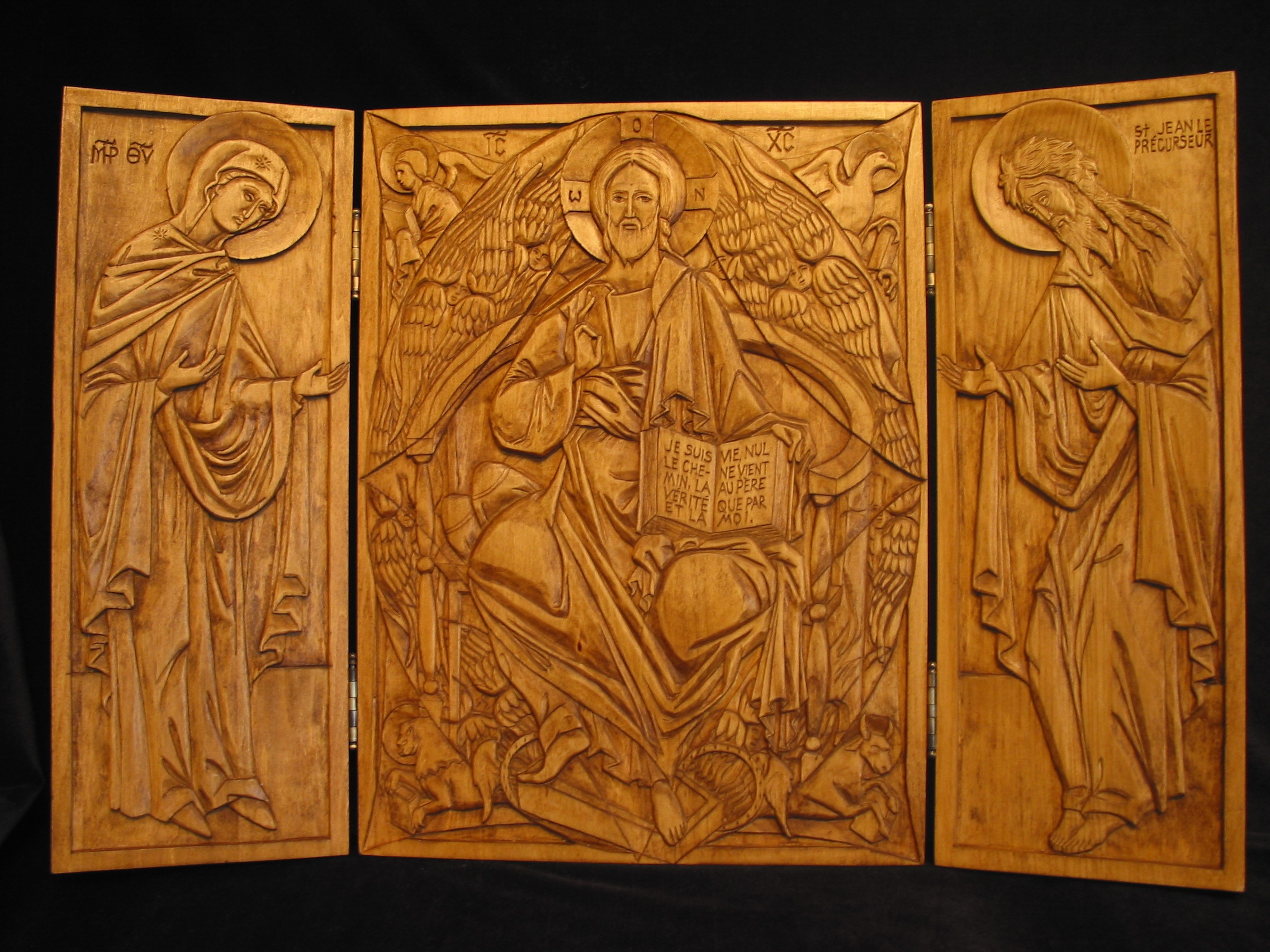 Here is some relief carving by Jonathan Pageau, an artisan based in Canada. Jonathan is Orthodox and is working very much within the iconographic form, the principles of which he will not compromise, as one would expect. However when I chatted with him about his work, it struck me that as well the more familiar Eastern forms, he has an interest in traditional Western forms of iconographic art as well.He is happy therefore to consider the portrayal of some Western types that are not part of the usual Eastern canon. He works in wood and a soft soapstone from Kenya called Kisii stone.
Here is some relief carving by Jonathan Pageau, an artisan based in Canada. Jonathan is Orthodox and is working very much within the iconographic form, the principles of which he will not compromise, as one would expect. However when I chatted with him about his work, it struck me that as well the more familiar Eastern forms, he has an interest in traditional Western forms of iconographic art as well.He is happy therefore to consider the portrayal of some Western types that are not part of the usual Eastern canon. He works in wood and a soft soapstone from Kenya called Kisii stone.
I am fascinated by relief carving, and wrote an article previously about some the principles behind it here. I have limited experience of sculpting in clay, in which I created a full three dimensional form in a traditional naturalistic style. This was an additional class when I was studying primarily academic drawing and painting in Florence several years ago. At the level I was working at, I found it in many ways easier to pick up than painting. When painting, the artist has to process the information received via the eye from a 3-dimensional form in such a way that he produces a 2-dimensional image is absent in naturalistic sculpture. This conversion from 3-D to 2-D is not necessary in sculpture and the final image is 3-D also. So in this respect it is a simpler process.
I have not attempted relief sculpture but it always struck me as more complicated than naturalistic sculpture requiring a controlled conversion of 3-dimensional information - into a part 3-, part 2-dimensional image.
 When I asked Jonathan about it, he described a process in which the 3-diminsional ideal is converted into a fully 2-dimensional image first – a drawing – and then this is converted back into the partially 3-dimensional form of the relief carving. So his first step is to draw the full line drawing, which must be just as detailed as if he were ultimately painting an icon rather than carving it. Next, this drawing is transferred onto the surface of the stone. He uses tracing paper to do this. Then he cuts around the main shapes to produce a vertical, stepped edge. After this the subtleties of shadow are introduced by introducing varying slopes on those edges and detail within the shapes. I asked him to send me some photos of work in progress to help give us an idea of the method. This he kindly did and these are shown below and right.
When I asked Jonathan about it, he described a process in which the 3-diminsional ideal is converted into a fully 2-dimensional image first – a drawing – and then this is converted back into the partially 3-dimensional form of the relief carving. So his first step is to draw the full line drawing, which must be just as detailed as if he were ultimately painting an icon rather than carving it. Next, this drawing is transferred onto the surface of the stone. He uses tracing paper to do this. Then he cuts around the main shapes to produce a vertical, stepped edge. After this the subtleties of shadow are introduced by introducing varying slopes on those edges and detail within the shapes. I asked him to send me some photos of work in progress to help give us an idea of the method. This he kindly did and these are shown below and right.
This means a relief sculptor using this method must be a good draughtsman. In contrast it is conceivable that someone could sculpt well in the naturalistic style, but is unable to draw well (and I have met one or two good sculptors who claimed that they couldn’t draw).
I have shown below completed works of a Russian Deisis, with Christ in glory (detail above), Our Lady and John the Forerunner ('Jean le Precuseur'); and of St George.
His website with more photographs and information is at http://pageaucarvings.com/ .
Work in progress




